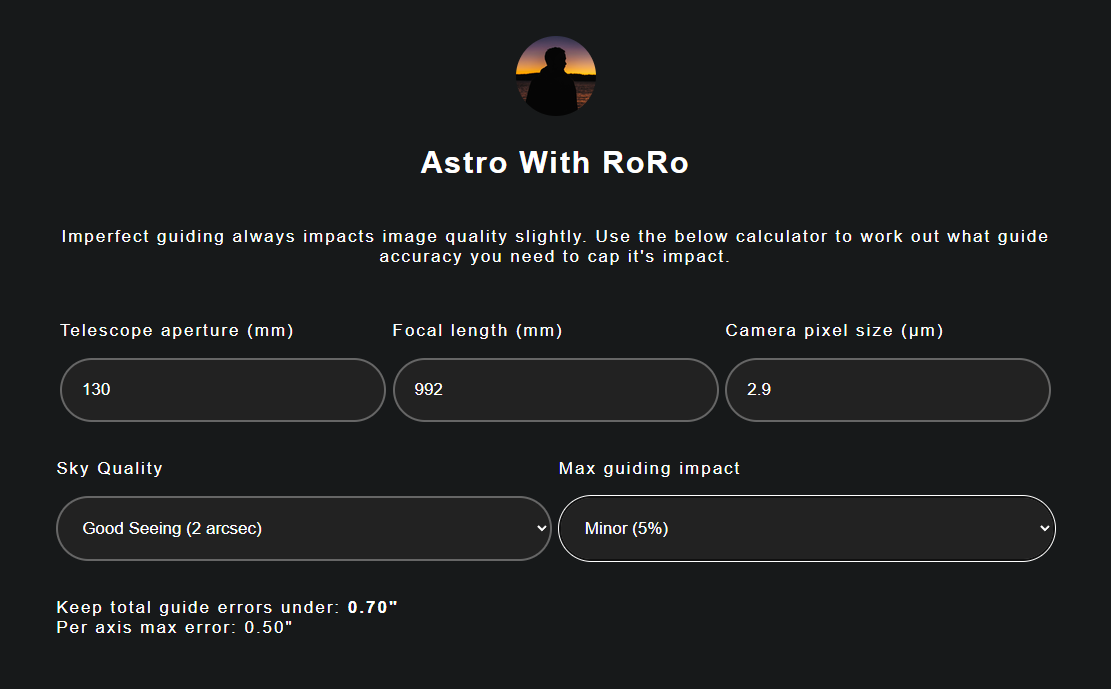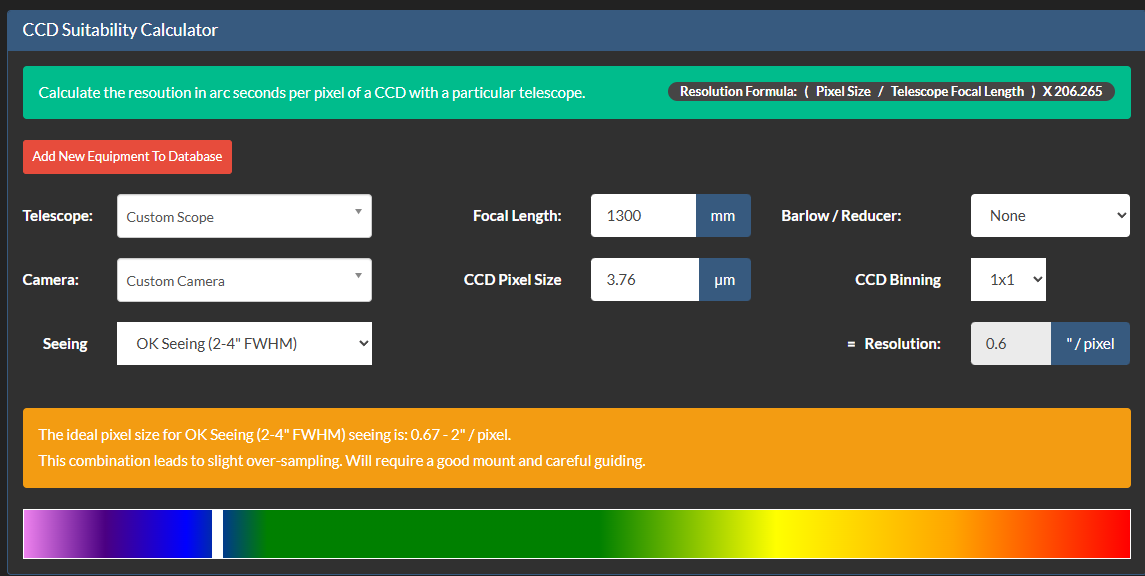I have been tweaking guiding settings the last week and have recently become a bit obsessed with the numbers. Ultimately I landed about 0.4RMS on my AM5 and this seems to be OK,
But…. There is something that does not quite add up, I am going to state what I have generally learned and then use some pretty common cameras for example
Generally, most advice suggests that the RMS numbers should be about half of the main camera/scope imaging scale for optimal guiding results.
To calculate image scale it is generally accepted that that 206.3*pixel size / focal length gives the scale.
So lets use a 300mm focal length scope and the asi2600mc camera,
206.3 * 3.76 = 775.688 / 300 = 2.585 (pixel scale) … Now divided in halve 1.25 RMS
But let’s use a 2500 focal length scope with the same main camera
206.x * 3.76 = 775.688 / 2500 = 0.310 … Now divided in half in 0.155 RMS
Ok here’s the dilemma, I don’t think very many people are pulling off 0.155 RMS, I actually think its possible but not very unlikely. Human/Physics/Computer error is starting to get really close when you are at 0.155RMS.
But, there are still fabulous images on this site with 2500mm focal length scopes and the asi2600mc camera.
I suppose you can bin, but these images I am seeing are not binned, so what gives?
Don’t tell me that every one of these imagers has a 50k mount that pulls off sub 0.1 RMS. I don’t believe that for a second.
What am I missing?
Using an OAG, doesn’t seem to matter, its still requires unreachable RMS numbers,
Thoughts? Please teach me what I am missing here? I have never imaged greater that 850mm FL anyways, so this has never really been a concern, but I have a small galaxy itch and big bad 10 inch SCTs are starting to look interesting.
But…. There is something that does not quite add up, I am going to state what I have generally learned and then use some pretty common cameras for example
Generally, most advice suggests that the RMS numbers should be about half of the main camera/scope imaging scale for optimal guiding results.
To calculate image scale it is generally accepted that that 206.3*pixel size / focal length gives the scale.
So lets use a 300mm focal length scope and the asi2600mc camera,
206.3 * 3.76 = 775.688 / 300 = 2.585 (pixel scale) … Now divided in halve 1.25 RMS
But let’s use a 2500 focal length scope with the same main camera
206.x * 3.76 = 775.688 / 2500 = 0.310 … Now divided in half in 0.155 RMS
Ok here’s the dilemma, I don’t think very many people are pulling off 0.155 RMS, I actually think its possible but not very unlikely. Human/Physics/Computer error is starting to get really close when you are at 0.155RMS.
But, there are still fabulous images on this site with 2500mm focal length scopes and the asi2600mc camera.
I suppose you can bin, but these images I am seeing are not binned, so what gives?
Don’t tell me that every one of these imagers has a 50k mount that pulls off sub 0.1 RMS. I don’t believe that for a second.
What am I missing?
Using an OAG, doesn’t seem to matter, its still requires unreachable RMS numbers,
Thoughts? Please teach me what I am missing here? I have never imaged greater that 850mm FL anyways, so this has never really been a concern, but I have a small galaxy itch and big bad 10 inch SCTs are starting to look interesting.

